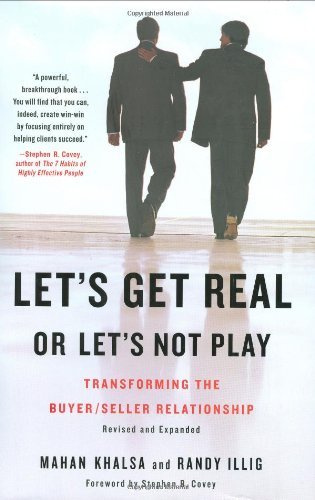What do you think?
Rate this book


288 pages, Hardcover
First published July 15, 1999
"If it makes good sense for us to do business, let's work together, have fun, and make some money. If not, let's find out quickly, shake hands, and part friends."Summary: Only move to a solution once you find a problem worth solving or result worth producing. Don't guess; ask. Research and understand business. Build business case to attract resources and develop decision process. Present exact solution to people who decide.